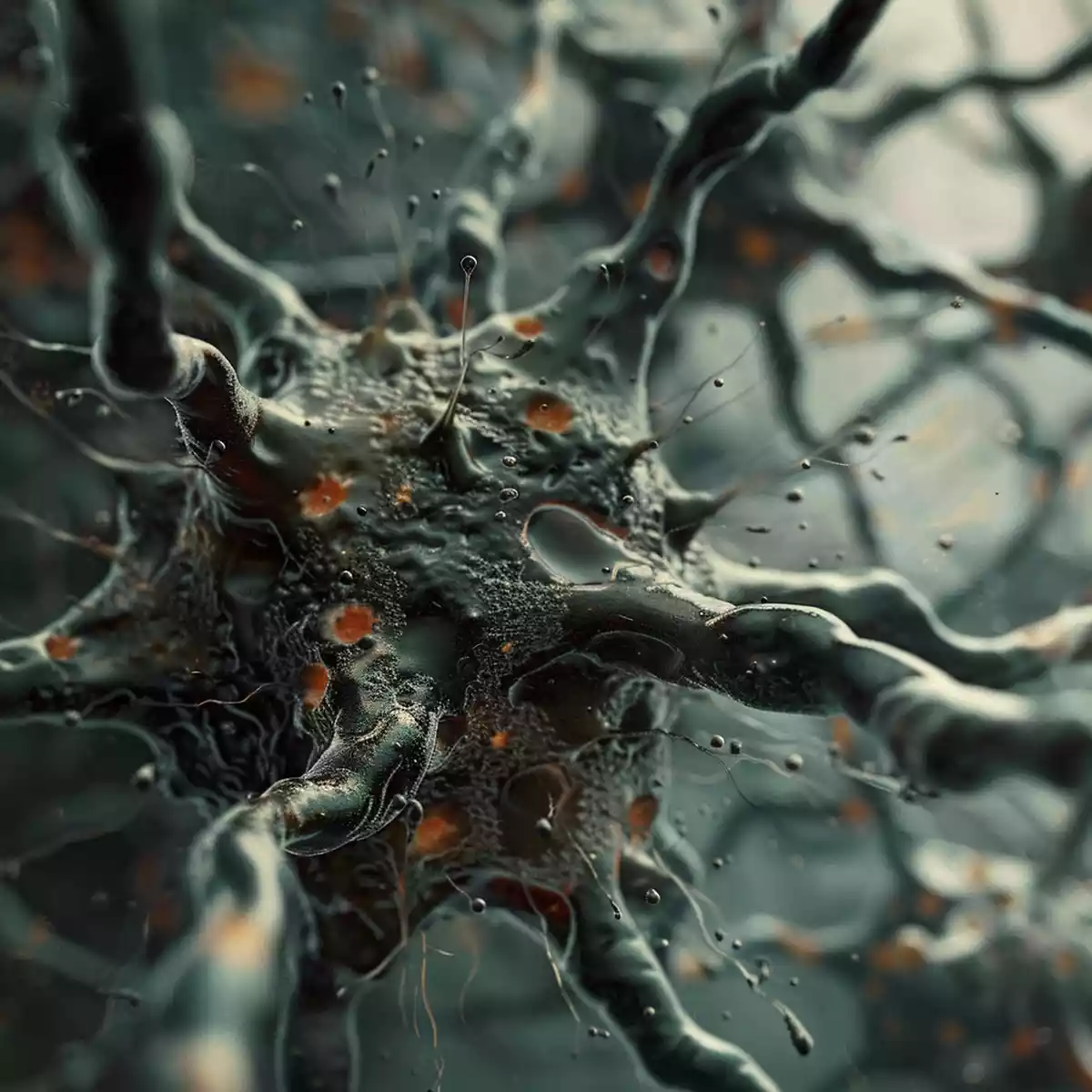
ADHD in adults, or Attention-Deficit/Hyperactivity Disorder in adulthood, is a neurodevelopmental condition characterised by persistent patterns of inattention, hyperactivity, and impulsivity that interfere with daily functioning and development. This complex disorder, once thought to be limited to childhood, is now recognised as a lifelong condition that can significantly impact various aspects of an adult’s life, including work performance, relationships, and overall well-being. Recent research has shed light on the clinical subtypes and associated characteristics of ADHD in adults, providing valuable insights into its manifestation and management in later life stages (Salvi et al., 2019). This article will explore the multifaceted nature of adult ADHD, examining its symptoms, diagnostic criteria, and treatment options, while also delving into the latest findings on its social and psychological implications.
Understanding ADHD in Adults
Attention-Deficit/Hyperactivity Disorder (ADHD) in adults is a complex neurodevelopmental condition that extends far beyond the common misconception of mere inattentiveness or hyperactivity. Its intricate nature demands a comprehensive understanding, encompassing various clinical subtypes, demographic patterns, and underlying neurobiological mechanisms.
Clinical Subtypes of Adult ADHD
Adult ADHD manifests in diverse ways, reflecting the heterogeneous nature of the disorder. Research published in the Rivista di Psichiatria has identified distinct clinical subtypes, each with unique characteristics and challenges (Salvi et al., 2019). These subtypes include:
- Predominantly Inattentive Type: Characterised by difficulty sustaining focus, forgetfulness, and disorganisation.
- Predominantly Hyperactive-Impulsive Type: Marked by restlessness, impulsivity, and excessive talking.
- Combined Type: Exhibiting symptoms of both inattention and hyperactivity-impulsivity.
Understanding these subtypes is crucial for accurate diagnosis and tailored treatment approaches. The inattentive type, often overlooked in childhood, may become more apparent in adulthood as professional and personal responsibilities increase.
Prevalence and Demographics
The prevalence of ADHD in adults varies across populations and cultures. Global estimates suggest that approximately 2.5-4% of adults worldwide meet the diagnostic criteria for ADHD. However, these figures may underrepresent the true prevalence due to diagnostic challenges and cultural variations in symptom recognition.
Demographic patterns reveal intriguing trends:
- Gender Differences: While ADHD is more commonly diagnosed in males during childhood, the gender gap narrows in adulthood.
- Age Distribution: Symptoms often persist from childhood, but some individuals may not receive a diagnosis until adulthood.
- Socioeconomic Factors: ADHD can impact individuals across all socioeconomic strata, but access to diagnosis and treatment may vary.
These demographic insights underscore the importance of comprehensive screening and awareness initiatives to ensure equitable access to care for all adults with ADHD.
Neurobiological Basis
The neurobiological underpinnings of adult ADHD are complex and multifaceted. Advanced neuroimaging techniques have provided valuable insights into the structural and functional brain differences associated with the disorder. Key findings include:
- Altered Brain Structure: Volumetric differences in regions such as the prefrontal cortex and basal ganglia.
- Neurotransmitter Imbalances: Dysregulation of dopamine and norepinephrine systems, crucial for attention and executive functions.
- Connectivity Issues: Atypical patterns of neural connectivity, particularly in networks related to attention and cognitive control.
These neurobiological factors contribute to the cognitive and behavioural symptoms characteristic of ADHD in adults. However, it’s essential to note that brain differences do not equate to deficiency; many adults with ADHD possess unique strengths and capabilities.
Recent research has also explored the genetic components of ADHD, revealing a complex interplay between genetic predisposition and environmental factors. Twin studies suggest a heritability rate of approximately 70-80%, highlighting the significant genetic contribution to the disorder.
Understanding the neurobiological basis of adult ADHD is crucial for developing targeted interventions and challenging stigmatising misconceptions. It emphasises that ADHD is a genuine neurological condition, not merely a lack of willpower or discipline.
The complexity of adult ADHD necessitates a multidisciplinary approach to research and treatment. As our understanding of the disorder evolves, so too must our strategies for support and intervention. By recognising the diverse manifestations of ADHD in adults and appreciating its neurobiological foundations, we can foster more inclusive and effective approaches to diagnosis, treatment, and societal acceptance.
Symptoms and Diagnosis
The landscape of adult ADHD symptoms is as diverse as it is challenging to navigate. Recognizing and accurately diagnosing this condition in adults requires a nuanced understanding of its manifestations and the intricate web of factors that can complicate its identification.
Core Symptoms of Adult ADHD
Adult ADHD presents a constellation of symptoms that can significantly impact daily functioning. While some symptoms may persist from childhood, others may evolve or emerge in adulthood:
- Inattention:
- Difficulty sustaining focus on tasks
- Frequent oversight of details
- Apparent “zoning out” during conversations
- Chronic procrastination and poor time management
- Hyperactivity:
- Inner restlessness or fidgetiness
- Excessive talking or interrupting others
- Inability to engage in quiet activities
- Constant need for movement or stimulation
- Impulsivity:
- Making rash decisions without considering consequences
- Difficulty waiting one’s turn
- Engaging in risky behaviors
- Blurting out thoughts inappropriately
These symptoms often manifest differently in adults compared to children. For instance, hyperactivity in adults may present as workaholic tendencies or restlessness rather than overt physical activity. Inattention might lead to career instability or relationship difficulties.
Diagnostic Challenges and Criteria
Diagnosing ADHD in adults presents unique challenges. The diagnostic process is complex, requiring a comprehensive evaluation that considers various factors:
- Historical Context: Assessing childhood symptoms and their progression into adulthood
- Current Functioning: Evaluating impairment across multiple life domains
- Differential Diagnosis: Ruling out other conditions with similar presentations
Diagnostic criteria, as outlined in the DSM-5, require:
- Persistent patterns of inattention and/or hyperactivity-impulsivity
- Onset of symptoms before age 12
- Presence of symptoms in multiple settings
- Clear evidence of interference with functioning
- Symptoms not better explained by another mental disorder
However, these criteria were initially developed for children, necessitating careful interpretation for adult diagnosis. Recognizing this, researchers have proposed modifications to better capture adult ADHD presentations (Weibel et al., 2020).
Comorbid Conditions
The diagnostic landscape of adult ADHD is further complicated by the high prevalence of comorbid conditions. These co-occurring disorders can mask or exacerbate ADHD symptoms, making accurate diagnosis challenging:
- Mood Disorders: Depression and bipolar disorder often coexist with ADHD, potentially leading to misdiagnosis or overlooked ADHD symptoms.
- Anxiety Disorders: Generalized anxiety, social anxiety, and panic disorders frequently accompany ADHD, sometimes as a result of longstanding ADHD-related challenges.
- Substance Use Disorders: Adults with ADHD have a higher risk of developing substance abuse issues, often as a form of self-medication.
- Learning Disorders: Dyslexia, dyscalculia, and other learning disabilities may co-occur, compounding academic and professional difficulties.
Recent research has highlighted the intricate relationship between ADHD and recurrent depression in adults, underscoring the need for comprehensive assessment and integrated treatment approaches (Powell et al., 2021).
The interplay between ADHD and comorbid conditions creates a complex clinical picture. Symptoms may overlap, interact, or mask each other, necessitating a thorough evaluation by experienced clinicians. For instance, the restlessness associated with anxiety may be mistaken for ADHD-related hyperactivity, or vice versa.
Moreover, the presence of comorbidities can significantly impact treatment outcomes and prognosis. Tailored interventions that address both ADHD and co-occurring conditions are often necessary for optimal management.
In light of these diagnostic complexities, a multi-modal assessment approach is crucial. This may include:
- Comprehensive clinical interviews
- Standardized rating scales and questionnaires
- Neuropsychological testing
- Collateral information from family members or partners
- Medical evaluations to rule out other potential causes of symptoms
By embracing a holistic diagnostic approach, clinicians can better navigate the intricate terrain of adult ADHD, ensuring more accurate diagnoses and paving the way for effective, personalized treatment strategies.

Management and Treatment Approaches
The journey of managing ADHD in adults is multifaceted, requiring a tailored approach that addresses the unique challenges faced by each individual. From pharmacological interventions to psychosocial therapies and lifestyle modifications, the treatment landscape is diverse and ever-evolving.
Pharmacological Interventions
Medication often plays a pivotal role in managing adult ADHD symptoms. The primary classes of medications include:
- Stimulants:
- Methylphenidate-based medications
- Amphetamine-based medications
- Non-stimulants:
- Atomoxetine
- Bupropion
- Guanfacine
Stimulants, the first-line treatment for many adults with ADHD, work by enhancing dopamine and norepinephrine activity in the brain. These neurotransmitters are crucial for attention, focus, and impulse control. The efficacy of stimulants in adult ADHD has been well-documented, with many individuals experiencing significant symptom reduction.
Non-stimulant medications offer an alternative for those who don’t respond well to stimulants or have contraindications. These medications typically have a different mechanism of action and may take longer to show effects but can be equally effective for some individuals.
Recent advancements in pharmacological approaches have explored extended-release formulations and novel delivery systems, aiming to provide more consistent symptom control throughout the day. However, medication is not a one-size-fits-all solution. Close monitoring and dose adjustments are often necessary to optimize treatment outcomes while minimizing side effects.
Psychosocial Therapies
While medication can alleviate core symptoms, psychosocial interventions are crucial for developing coping strategies and addressing the broader impact of ADHD on an individual’s life. Key therapeutic approaches include:
- Cognitive Behavioral Therapy (CBT): Tailored for adult ADHD, CBT helps individuals identify and modify negative thought patterns and behaviors. It focuses on developing organizational skills, time management techniques, and strategies to combat procrastination.
- Mindfulness-Based Interventions: These practices can enhance attention control and emotional regulation. Mindfulness techniques have shown promise in reducing ADHD symptoms and improving overall well-being.
- Coaching: ADHD coaches work with individuals to set goals, develop organizational systems, and implement practical strategies for managing daily challenges.
- Group Therapy: Sharing experiences with peers can provide valuable support and insights. Group settings also offer opportunities to practice social skills and receive real-time feedback.
The effectiveness of psychosocial interventions has been increasingly recognized. A study published in L’encephale highlighted the importance of combining pharmacological and non-pharmacological approaches for optimal management of adult ADHD (Weibel et al., 2020).
Lifestyle Modifications and Coping Strategies
Beyond formal treatments, lifestyle adjustments can significantly impact the management of adult ADHD:
- Environmental Modifications:
- Creating structured workspaces
- Utilizing visual reminders and organizational tools
- Minimizing distractions in living and working environments
- Routine and Structure:
- Establishing consistent daily routines
- Breaking tasks into manageable steps
- Using timers and alarms for time management
- Physical Activity:
- Regular exercise to improve focus and reduce hyperactivity
- Incorporating movement breaks throughout the day
- Nutrition and Sleep:
- Maintaining a balanced diet
- Prioritizing adequate and consistent sleep patterns
- Technology Utilization:
- Leveraging apps and digital tools for organization and reminders
- Using noise-cancelling headphones or white noise for concentration
These strategies, when tailored to individual needs, can significantly enhance the effectiveness of other treatment modalities. The key lies in experimentation and persistence, as what works for one person may not work for another.
Interestingly, research has begun to explore how adults with ADHD discuss their experiences on social media platforms. A study in the Journal of Attention Disorders analyzed the language used by adults with ADHD online, providing insights into their daily challenges and coping mechanisms (Guntuku et al., 2019). This research underscores the potential of social media as both a support network and a source of valuable data for understanding the lived experiences of adults with ADHD.
The management of adult ADHD is an ongoing process, often requiring adjustments and refinements over time. As our understanding of the disorder evolves, so too do the strategies for its management. The most effective approach typically involves a combination of treatments, tailored to the individual’s specific symptoms, life circumstances, and personal goals.
Conclusion
ADHD in adults is a complex neurodevelopmental disorder that significantly impacts various aspects of life. Its multifaceted nature necessitates a comprehensive approach to diagnosis and management. From understanding the diverse clinical subtypes to navigating the challenges of diagnosis amidst comorbid conditions, the journey of an adult with ADHD is unique and often complex. Effective management typically involves a combination of pharmacological interventions, psychosocial therapies, and personalized lifestyle modifications. As research continues to evolve, so does our understanding of adult ADHD, paving the way for more targeted and effective interventions. The key lies in recognizing the individuality of each case and tailoring approaches accordingly, ensuring that adults with ADHD can harness their strengths and navigate their challenges effectively.
enofmedicines.com
Bibliography
- Anbarasan, D., et al. “Screening for adult ADHD.” Current psychiatry reports 22.12 (2020): 1-8. link.springer.com
- Guntuku, Sharath Chandra, et al. “Language of ADHD in adults on social media.” Journal of attention disorders 23.12 (2019): 1475-1485. journals.sagepub.com
- Powell, Victoria, et al. “ADHD in adults with recurrent depression.” Journal of affective disorders 295 (2021): 1153-1160. sciencedirect.com
- Salvi, Virginio, et al. “ADHD in adults: clinical subtypes and associated characteristics.” Rivista di psichiatria 54.2 (2019): 84-89. rivistadipsichiatria.it
- Weibel, Sébastien, et al. “Practical considerations for the evaluation and management of Attention Deficit Hyperactivity Disorder (ADHD) in adults.” L’encephale 46.1 (2020): 30-40. sciencedirect.com
FAQ
What are the common ADHD symptoms in adults?
Adult ADHD symptoms include difficulty focusing, forgetfulness, impulsivity, and restlessness. Many experience challenges with time management, organization, and completing tasks. Mood swings, low frustration tolerance, and trouble multitasking are also common. Symptoms can vary in severity and presentation among individuals.
How is ADHD diagnosed in adults?
ADHD diagnosis in adults involves a comprehensive evaluation by a mental health professional. This typically includes a detailed clinical interview, review of childhood and current symptoms, and often questionnaires or rating scales. Other conditions with similar symptoms are ruled out, and the impact on daily functioning is assessed.
What medication options are available for adult ADHD?
ADHD medications for adults primarily include stimulants like methylphenidate and amphetamines, which can improve focus and reduce impulsivity. Non-stimulant options such as atomoxetine, bupropion, and guanfacine are also available. The choice depends on individual symptoms, medical history, and potential side effects. Regular monitoring is essential.
How does ADHD in adults differ from childhood ADHD?
Adult ADHD often manifests differently than in childhood. Hyperactivity may decrease, while inattention and impulsivity often persist. Adults might struggle more with time management, organization, and completing complex tasks. Relationship difficulties and career challenges are common. Symptoms are often more subtle but can significantly impact daily functioning.
What are effective non-medication treatments for adult ADHD?
Non-medication treatments for adult ADHD include cognitive-behavioral therapy, which helps develop coping strategies and address negative thought patterns. ADHD coaching can improve organization and time management skills. Mindfulness practices may enhance focus and emotional regulation. Lifestyle modifications, such as regular exercise and structured routines, can also be beneficial.
Can ADHD develop in adulthood, or is it always present from childhood?
ADHD is generally considered a neurodevelopmental disorder that begins in childhood. However, it's not uncommon for adults to receive a first-time diagnosis. This often occurs when childhood symptoms were mild or overlooked. While symptoms must have been present in childhood for a diagnosis, they may become more apparent or problematic in adulthood.
How does ADHD affect relationships and work life in adults?
ADHD can significantly impact adult relationships and work life. In relationships, it may lead to communication issues, forgetfulness, and emotional reactivity. At work, adults with ADHD might struggle with meeting deadlines, staying organized, and maintaining focus during meetings. These challenges can affect career progression and personal satisfaction.
What are the differences between ADD and ADHD?
ADD (Attention Deficit Disorder) is an outdated term. It's now considered a subtype of ADHD known as Predominantly Inattentive Type. ADHD is the current umbrella term that includes three subtypes: Predominantly Inattentive, Predominantly Hyperactive-Impulsive, and Combined Type. The main difference is the presence or absence of hyperactivity-impulsivity symptoms.
How does ADHD present differently in women compared to men?
ADHD in women often presents more subtly than in men. Women are more likely to have inattentive symptoms rather than hyperactivity. They may struggle with internal restlessness, emotional regulation, and organizational skills. Women with ADHD often experience higher rates of anxiety and depression. Diagnosis can be delayed due to these differences in presentation.


